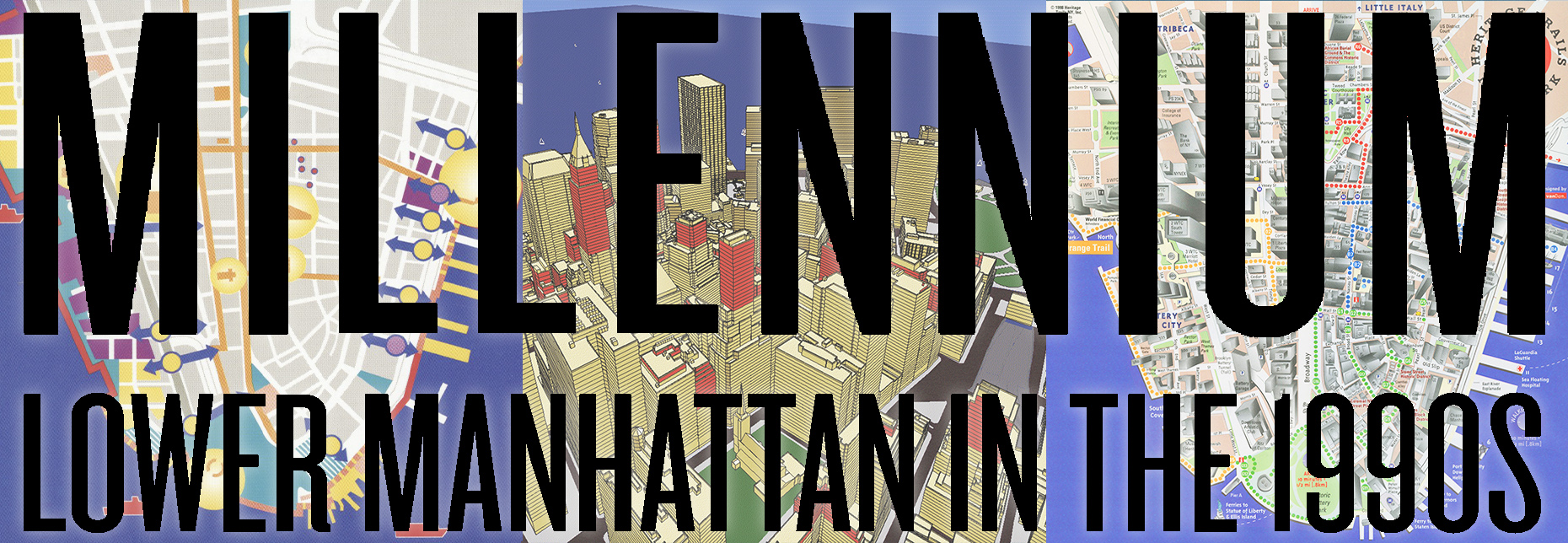The Skyscraper Museum is devoted to the study of high-rise building, past, present, and future. The Museum explores tall buildings as objects of design, products of technology, sites of construction, investments in real estate, and places of work and residence. This site will look better in a browser that supports web standards, but it is accessible to any browser or Internet device.
PANEL DISCUSSION
"WHEN WALL STREET WAS UNOCCUPIED":
How Downtown Changed in the Decade
Before and After 9/11
Tuesday, April 3rd, 6:30 - 8 PM
Cornell AAP, 26 Broadway, 20th Floor (Click here for directions)
A panel of key players responsible for the fate and future of Downtown in the last decade of the millennium camee together to reflect on lower Manhattan, then and now. Two past Chairs of the Landmarks Preservation Commission whose tenures spanned the Nineties, Laurie Beckelman and Jennifer Raab, Joe Rose, Chairman of the NYC Planning Commission from 1993-2002 in the administration of Mayor Rudolph Giuliani, and Carl Weisbrod, who in 1995 left the Economic Development Corporation (EDC), of which he was the first President, to head the new The Alliance for Downtown New York, the BID established to help address the decline of the Financial District and its 30 million square feet of vacant space. Carol Willis, who founded The Skyscraper Museum in a vacant space at 44 Wall Street in 1997, will introduce the themes of the discussion and Lynne Sagalyn, Professor Emerita of Real Estate at Columbia Business School and author of Power at Ground Zero, Politics, Money, and the Rebuilding of Lower Manhattan, will serve as moderator for the panel.
Carol Willis Introduction
Laurie Beckelman
Jennifer Raab
Joe Rose
Carl Weisbrod
Panel Discussion moderated by Lynne Sagalyn
SPEAKERSLaurie Beckelman, who has worked in the fields of historic preservation, and the development and administration of cultural institutions since the 1980s, is currently a partner in the consulting firm Capalino + Beckelman, as well as the Associate Director of The Shed, a new cultural facility under construction in Hudson Yards. From 1990 through 1994, she was the Chair the Landmarks Preservation Commission, and in the late Nineties, she was Deputy Director for Special Projects for the Guggenheim Foundation, where she was responsible for the proposed Frank Gehry-designed Guggenheim Museum at Wall Street and the East River.
Jennifer Raab is the President of Hunter College, a position she has held since 2001. She served as Chairwoman of the Landmarks Preservation Commission from 1995 - 2001, during which time 25 sites in the Financial District were designated landmarks. Her initiative to work with commercial property owners to landmark and adaptively reuse their high-rises with historic preservation tax credits and abatements succeeded in protecting more at least 20 historic skyscrapers in the Downtown district.
Joe Rose is chair of Rose Urban Strategies. He served from 1994-2002 as the Chair of the NYC Planning Commission and Director of the Department of City Planning in the Giuliani administration. Rose initiated a broad range of strategic initiatives, including extensive rezoning throughout the city. In lower Manhattan, a package of economic and regulatory incentives encouraged reinvestments in older buildings and the conversion of historic FiDi buildings to residential use.
Lynne Sagalyn, who will serve as moderator for the panel, is Professor Emerita of Real Estate at Columbia Business School and author of Power at Ground Zero, Politics, Money, and the Rebuilding of Lower Manhattan (OUP, 2016). Her previous book, Times Square Roulette: Remaking the City Icon (MIT, 2003), analyzed the fall and rise of 42nd Street and Times Square in the two decades before the millennium.
Carl Weisbrod, who served in the dual roles as Director of New York’s Planning Department and the Planning Commission chairman in the administration of Mayor de Blasio from, 2014-2017, has a long history of public service, especially in lower Manhattan. He was President of the Economic Development Corporation (EDC) from 1990 to 1994, and in 1995 was the founding president of the Alliance for Downtown New York.
Click here for the VIRTUAL EXHIBITION
Click here for HERITAGE TRAILS NEW YORK
Read the review of MILLENNIUM in Architect's Newspaper.
MILLENNIUM is presented with the generous support of the J.M. Kaplan Fund.

The exhibitions and programs of The Skyscraper Museum are supported, in part, by public funds from the New York City Department of Cultural Affairs in partnership with the City Council.
The exhibitions and programs of The Skyscraper Museum are made possible by the New York State Council on the Arts with the support of Governor Andrew Cuomo and the New York State Legislature.


